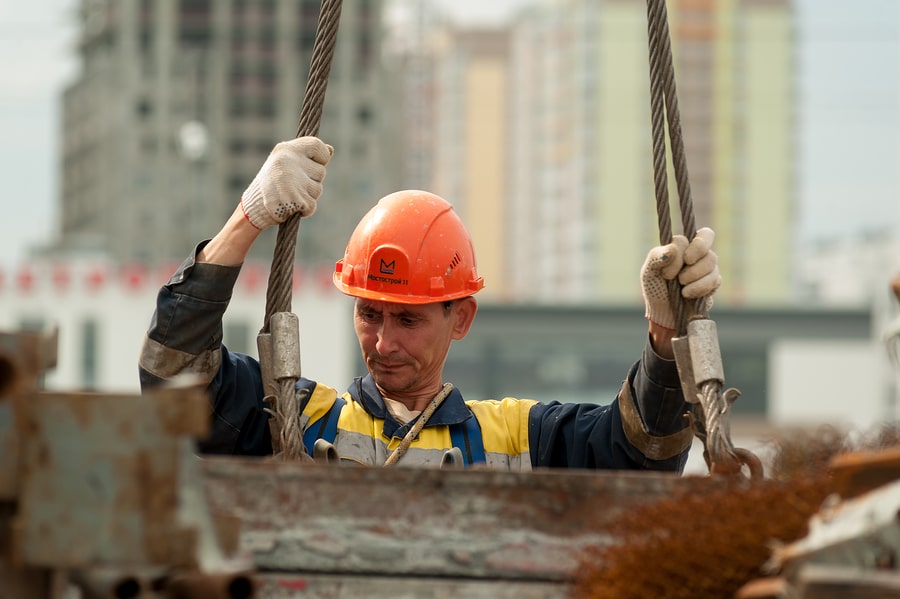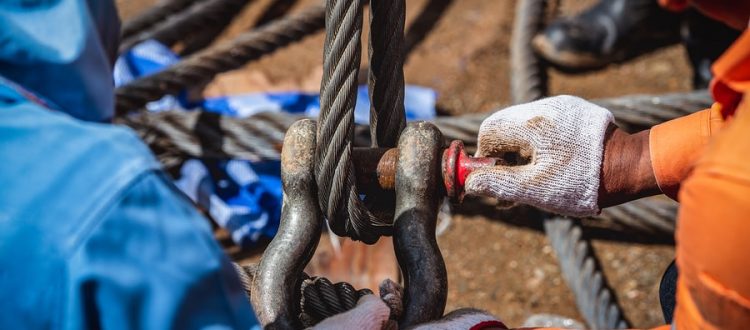What Is The Role Of A Rigger?
A rigger is a specialist in moving tasks that cannot be accomplished by ordinary means. As a rigger, you would use equipment that has been expressly designed for maneuvering and lifting objects that weigh hundreds of thousands of kilograms.
Due to the highly specialized nature of the job, to learn this role, you will have to undergo formal course training as well as on the job training.
Additionally, like many other roles in the construction or operations industry, the role of the rigger is not a standalone one. You will have to work with complimentary team members to ensure the success of the lifting operation. Most importantly, this will improve safety for you during the course of his or her work.
Importance of a Rigger
A riggerman is critical to successful lifting operations, making them in demand within both construction and operations fields. In construction related industries, safety is of the utmost importance. This is especially so when heavy objects are being lifted by heavy equipment.
Prior to lifting any load, riggers need to attach cables or ropes to the load which needs to be lifted. The proper attachment of the rigging equipment is critical to allowing the heavy machinery to successfully transport loads.
For example, heavy concrete pipes may need to be lifted using a crane from one lot to another. This is hardly a simple operation as when mismanaged, the pipes or slip free or the crane’s balance may be thrown off. As a rigger, your job here would be to ensure that the pipes are secured correctly for the operation.
A Rigger’s Competencies
Riggers know which hitches need to be tied and how much weight the can support. They understand how the center of gravity will affect a load’s balance and stability as well as how to find the center of balance.
Equipment that is commonly used in rigging include those of slings, chokers, shackles and winches. Through their competent usage, riggers enable heavy equipment to move through confined spaces as well as to tilt, turn or dip loads to avoid any environmental hazards.
Responsibilities of a Rigger
To get a better idea of the kind of work that you will be performing as a rigger, read our non-exhaustive list of responsibilities:
- Signal and verbally direct all workers engaged in hoisting and moving loads.
- Account for the safety of all workers, materials and machinery during the operation.
- Attach loads to rigging before hoisting is done by heavy machinery.
- Correct selection of slings, shackles, chokers and winches in accordance with their load bearing limits and environmental conditions.
- Test rigging that has been set to ensure secure, reliable and safe operations.
- Control the movement of both heavy equipment and loads through confined spaces or narrow openings. Equipment used includes chain falls, gin poles and gallows frames.
- Tilt and dip suspended loads in order to maneuver loads past obstacles. Multi-point suspension techniques may be required.
- Manipulate rigging lines, hoists and gears in order to support materials.
- Attach pulleys or blocks to fixed overhead structures using bolts and clamps as needed.
- Dismantle and store any equipment after use.
- Clean and maintain equipment

Conduct Thorough Inspection Before The Operation
As a rigging expert, you must inspect both the heavy machinery and the handling equipment to ensure that they are safe to use. No technical issue, no matter how minor it is deemed, should be ignored. Furthermore, you must account for weather conditions to ensure lifting safety.
Document Technical Issues
Over time, all machinery and equipment will suffer from wear and tear. These technical problems may cause them to malfunction and be dangerous to use. As such, you should take the effort to document all observations and to remove any equipment that is no longer functional.
Balancing The Load
A universal rigging technique involves you ensuring that the upper suspension and the load hook form a straight line. Moreover, neither the chain nor the hoist body should come in contact with the load.
When these practices are followed, the load should be well balanced and the heavy lifting equipment will be kept in balance.
Safeguarding People from the Load
No personnel should be allowed to stand under a suspended load. Even if you are supremely confident of the rigging, it is still your responsibility to keep people clear from the load.
Furthermore, you should advice the team to avoid contact with any power lines as these could cause an electric shock.
Land the Load
In the event that the operation needs to be paused, the load should be landed. At no point should the load be allowed to remained suspended while the machine is turned off. This is also applicable for when a hoist is not being supervised.
Use Strong Slings
Any slings that are used must be in good condition and durable before they are used to lift the heavy load. We recommend that you measure the tension exerted on each sling leg, ensuring that it does not exceed the vertical capacity of the slings.
Always Have a Spotter When Load Lifting
You may not always have visible access to every angle of load. As such, it is advisable to have spotters to check from various angles. This will ensure that the load has the required clearance from any obstacle in the environment.
Store All Hoist & Hooking Equipment Safely
Once the operation has been completed, all rigging equipment needs to be stored in a safe location. They should be sheltered from weather while also not being a potential hazard to passerby.
Sign Up for the WSQ Perform Rigger And Signalman Tasks Course At THT Academy
The THT Academy (formerly known as Tat Hong Training Services Pte Ltd) offers the WSQ Perform Rigger And Signalman Tasks course. Held over the duration 2 days, with 17.5 lesson hours, you will receive a Statement of Attainment (SOA) at the end of the course.
After completing the course, you would have been trained with the knowledge and application skills to carry out rigger and signalman tasks.
THT Academy Pte Ltd has provided heavy machinery operation training to businesses since 1999. We strongly support lifelong learning and re-training of individuals to help them enhance their employability.
Get your perform rigger and signalman task certification with THT Academy. Learners will be eligible to clock hours for the BCA Multi-Skilling Scheme. To find out more about Multi-Skilling:
https://tathongtrainingcentre.com/what-is-the-singapore-bca-multi-skilling-scheme/


